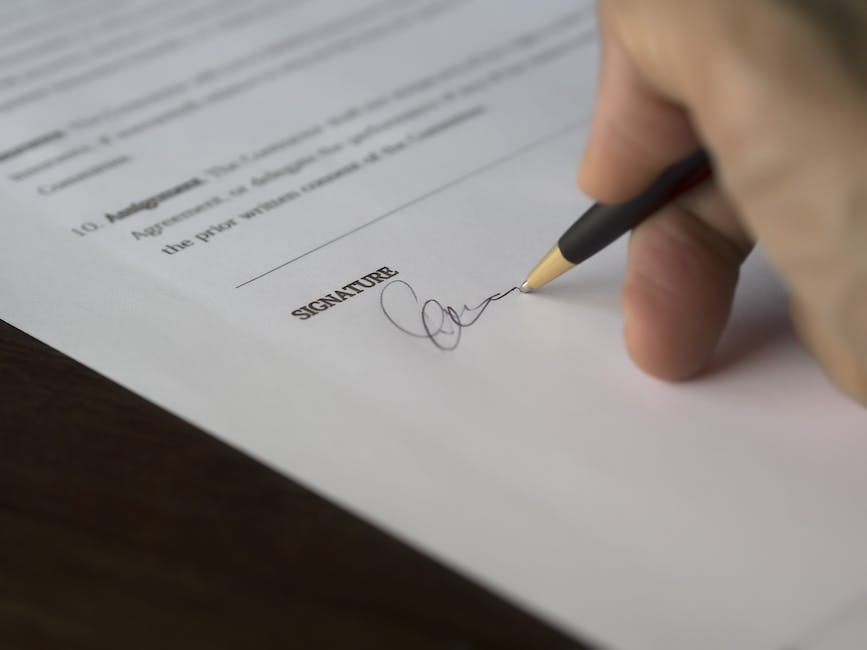What is a Retainer Agreement for Freelancers?

As a freelancer, you might have heard of the term ‘retainer agreement,’ but do you know what it entails? A retainer agreement is a legal contract between a freelancer and their client, stipulating the terms and conditions of their working relationship. This blog post aims to demystify retainer agreements and shed light on their importance in the freelancing world.

Understanding Retainer Agreements
A retainer agreement is a contractual agreement that binds a client to pay a freelancer a set amount in advance for work that will be completed over a certain period. It lays out the scope of work, payment terms, and various other conditions related to the professional relationship between both parties.
For instance, a graphic designer may have a retainer agreement with a company to create a specific number of designs each month. In such a situation, the retainer agreement outlines the expected deliverables, due dates, and compensation for the designer’s services.
Why Retainer Agreements are vital for Freelancers
Retainer agreements provide a sense of financial security to freelancers. Knowing that a certain amount of income is guaranteed each month can help freelancers manage their finances better and plan for the future.
Moreover, retainer agreements can foster better client relationships. They establish clear expectations from the onset, thereby reducing the chance for misunderstandings or disputes. This clarity can pave the way for long-term collaborations and mutual trust.
Lastly, retainer agreements can save freelancers from the constant hustle to find new projects. Once you secure a client on retainer, you can focus more on delivering quality work rather than seeking out new opportunities.
Key Components of a Retainer Agreement
Understanding the key components of a retainer agreement is critical in creating an effective agreement that promotes a healthy and long-lasting business relationship. Each component has its own significance and role in the overall structure and function of the agreement. Let’s break them down:
Scope of Work
What exactly are you being hired to do? The scope of work is the heartbeat of your retainer agreement. It outlines the specific tasks or services you, as a freelancer, are expected to perform. This could range from graphic design to content creation, programming, consulting, and more. By clearly defining the scope of work, you can set clear expectations with your client and avoid potential misunderstandings.
It’s important to be as detailed as possible in this section. Does the project have phases? Are there specific milestones? Will revisions be needed? Addressing these questions in your scope of work can help ensure both parties are on the same page.
Payment Terms
Another crucial component of your retainer agreement is the payment terms. This section pertains to the retainer fee, which is an upfront cost that the client pays to secure your services. It outlines when and how often the client will make payments, and the methods of payment that are acceptable.
The payment terms can also include details about what happens if a payment is late, or if the client wants to terminate the agreement prematurely. It’s not the most comfortable part of the agreement to discuss, but it’s necessary for protecting your interests as a freelancer.
Common Mistakes to Avoid when Crafting a Retainer Agreement
As with anything in life, there can be pitfalls in crafting retainer agreements. Being aware of these common mistakes can save you from future headaches. So, what should you look out for?
Firstly, avoid being vague. Ambiguity in your retainer agreement can lead to misunderstandings and disputes. Be specific in your scope of work and payment terms. Know your worth and make sure it’s reflected in your fee.
Secondly, don’t forget about the termination clause. This is a vital part of your agreement that outlines the conditions under which the agreement can be terminated. It provides a roadmap for ending the relationship professionally if things don’t work out.
Lastly, don’t neglect the revision clause. It’s a common occurrence in freelancing that clients ask for revisions. Having a clause that specifies how revisions are handled can save you from endless editing loops.
Remember, a well-crafted retainer agreement is your best bet in safeguarding your freelance business. So, take your time, do your research, and if necessary, seek professional advice.
Drafting Your First Retainer Agreement
Ready to draft your first retainer agreement? That’s a significant step forward in your freelance career. But where do you start? What elements should you include to safeguard your interests and those of your client?
First and foremost, your retainer agreement should clearly state the client’s details. This includes the client’s name, address, and contact information. This not only identifies who you’re working with but also serves as a reference in case of any future disputes.
Next, your agreement should detail the services you’re providing. Be as specific as possible. This will help avoid any confusion or misunderstanding about your role and responsibilities. Are these services going to be recurring or a one-off? What is the expected quality and quantity of the work? These are some of the questions your agreement should answer.
Payment terms are another crucial aspect. Your agreement must state the retainer fee and when and how often the client will make these payments. Will it be monthly or bi-weekly? Will the payment be made via bank transfer, check, or another method? Specifying these details can help avoid payment issues down the line.
Finally, your retainer agreement should include termination clauses. These stipulate the conditions under which either party can terminate the agreement. For instance, non-payment of fees, low-quality work, or breach of any other terms in the agreement. But what happens after termination? Will there be any refunds? How much notice is needed? Your agreement should answer all these questions.
Legal Implications of Retainer Agreements
Now that you know how to draft a retainer agreement, it’s important to understand its legal implications. What happens if one party doesn’t adhere to the terms of the agreement?
Retainer agreements are legally binding contracts. That means if one party fails to meet their obligations, they could face legal consequences. For example, if a client refuses to pay the agreed fees, the freelancer can take legal action to recover the owed money. But remember, this should be the last resort, it’s always best to try and resolve disputes amicably first.
On the other hand, if a freelancer fails to deliver the agreed services, they may face legal repercussions. The client could take the freelancer to court for breach of contract and seek compensation for any losses incurred due to the freelancer’s non-performance.
It’s essential to note that the legal implications can vary based on the specific laws of your country or state. Therefore, it’s always a good idea to seek legal advice before drafting or signing a retainer agreement.

Tips to Negotiate a Favorable Retainer Agreement
So, you now know what a retainer agreement is, its components, and how to draft one. But how do you negotiate a favorable one? Here are some practical tips to guide you.
Understand Your Worth
First and foremost, understand the value you bring to the table. Your skills and expertise are worth something, and it’s vital to recognize that when negotiating your retainer fee. Don’t undersell yourself.
Be Clear About Your Services
Clearly define the services you will be rendering under the retainer agreement. This helps to avoid misunderstandings and ensures you’re compensated fairly for your work.
Don’t Be Afraid to Negotiate
Negotiation is a part of business. Don’t shy away from negotiating your terms. Remember, the worst they can say is no, and even then, there’s always room for compromise.
Get Everything in Writing
Always have the agreement in writing and ensure that both parties sign it. This provides a legal safety net should any issues arise.
Best Practices for Maintaining an Effective Retainer Agreement
Having a retainer agreement in place is one thing, but maintaining its effectiveness is another. Here are some best practices to ensure your agreement is performed effectively by both parties.
Regular Communication
Keep the lines of communication open with your clients. Regular updates and check-ins can help address any issues early and ensure that both parties are on the same page.
Deliver Quality Work
Ensure you deliver quality work consistently. This not only keeps your clients happy but also strengthens your relationship and increases the chances of your retainer agreement being renewed.
Review and Update the Agreement Periodically
Things change, and so should your retainer agreement. Review and update your agreement periodically to reflect any changes in services, fees, or other terms.
Closing Thoughts and Next Steps
Retainer agreements are a crucial tool for freelancers, providing financial security, guaranteeing work, and fostering strong client relationships. It’s essential to understand their components, how to negotiate a favorable one, and best practices for maintaining their effectiveness.
What’s next? If you’re unsure, consider seeking legal advice to ensure your retainer agreement is legally sound. Alternatively, you can use online templates to help you draft your agreement. But remember, every freelancer’s situation is unique, so make sure to customize the template to fit your specific needs.
Remember, a well-negotiated and effectively maintained retainer agreement can be the key to a successful and rewarding freelancing career. So, what are you waiting for?
Get Organized & Win More Clients
Kosmo has everything you need to run your freelancing business.